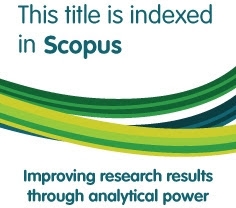Para Wali Nyentrik: Rekontekstualisasi Islamisasi di Tanah Jawa, Menantang Fundamentalisme Islam
Abstract
Keywords
Full Text:
PDFReferences
Chambert-Loir, Henri, and Claude Guillot. 2007. “Indonesia.” In Ziarah Dan Wali Di Dunia Islam, 2007: École française d’Extreme-Oriênt Forum Jakarta-Paris, 333–60.
Fathurahman, Oman. 2018. “Female Indonesian Sufis: Shattariya Murids in the 18th and 19th Centuries in Java.” Kyoto Bulletin of Islamic Area Studies 11: 40–67.
Fox, James J. 2003. “Interpreting the Significance of Tombs and Chronicles in Contemporary Java.” In The Potent Dead: Ancestors, Saints and Heroes in Contemporary Indonesia, eds. Henri Chambert-Loir and Anthony Reid. London: Allen & Unwin, 160–72.
Jamhari. 2000. “In the Center of Meaning: Ziarah Tradition in Java.” Studia Islamika: Indonesian Journal for Islamic Studies 7(1): 51–90.
Jonge, Huub de. 1998. “Pilgrimages and Local Islam on Java.” Studia Islamika 5(2): 1–25.
Laksana, Albertus Bagus. 2016. Muslim and Catholic Pilgrimage Practices: Explorations Through Java. New York: Routledge.
Quinn, George. 2008. “Throwing Money at the Holy Door: Commercial Aspects of Popular Pilgrimage in Java.” In Expressing Islam: Religious Life and Politics in Indonesia, eds. Greg Fealy and Sally White. Singapore: Institute of Southeast Asian Studies, 63–79.
———. 2009. “National Legitimacy through a Regional Prism: Local Pilgrimage and Javanese’s President.” In The Politics of the Periphery in Indonesia: Social and Geographical Perspectives, eds. John H. Walker, Glenn Banks, and Minako Sakai. Singapore: NUS Press, 173–99.
Ricklefs, Merle C. 2006. Mystic Synthesis in Java: A History of Islamization from the Fourteenth to the Early Nineteenth Centuries. Norwalk: EastBridge.
Sunyoto, Agus. 2012. Atlas Wali Songo: Buku Pertama Yang Mengungkap Wali Songo Sebagai Fakta Sejarah. Jakarta: Pustaka Iiman.
DOI: https://doi.org/10.15408/sdi.v26i2.12789
Refbacks
- There are currently no refbacks.

All publication by Studia Islamika are licensed under a Creative Commons Attribution-NonCommercial 4.0 International License.
Studia Islamika, ISSN: 0215-0492, e-ISSN: 2355-6145
View My Stats
